Solar Australia's Green Energy: Market, Finance & Literature Review
VerifiedAdded on 2023/06/05
|12
|1058
|62
Report
AI Summary
This report provides an analysis of Solar Australia, a green energy initiative focused on selling solar panels for residential and commercial purposes in Australia. The report includes a market analysis, identifying target customers and market trends such as the introduction of photovoltaic cells. It outlines the company's advantages and disadvantages, including its unique business model and the absence of expert advice. A financial plan with revenue and expense forecasts is presented, predicting a 5% revenue increase initially. The literature review highlights the increasing interest in battery storage for solar energy and Australia's high solar radiation. It concludes that solar energy is a booming sector with great potential for Solar Australia, despite strong competition. The report references several studies on solar energy in Australia.
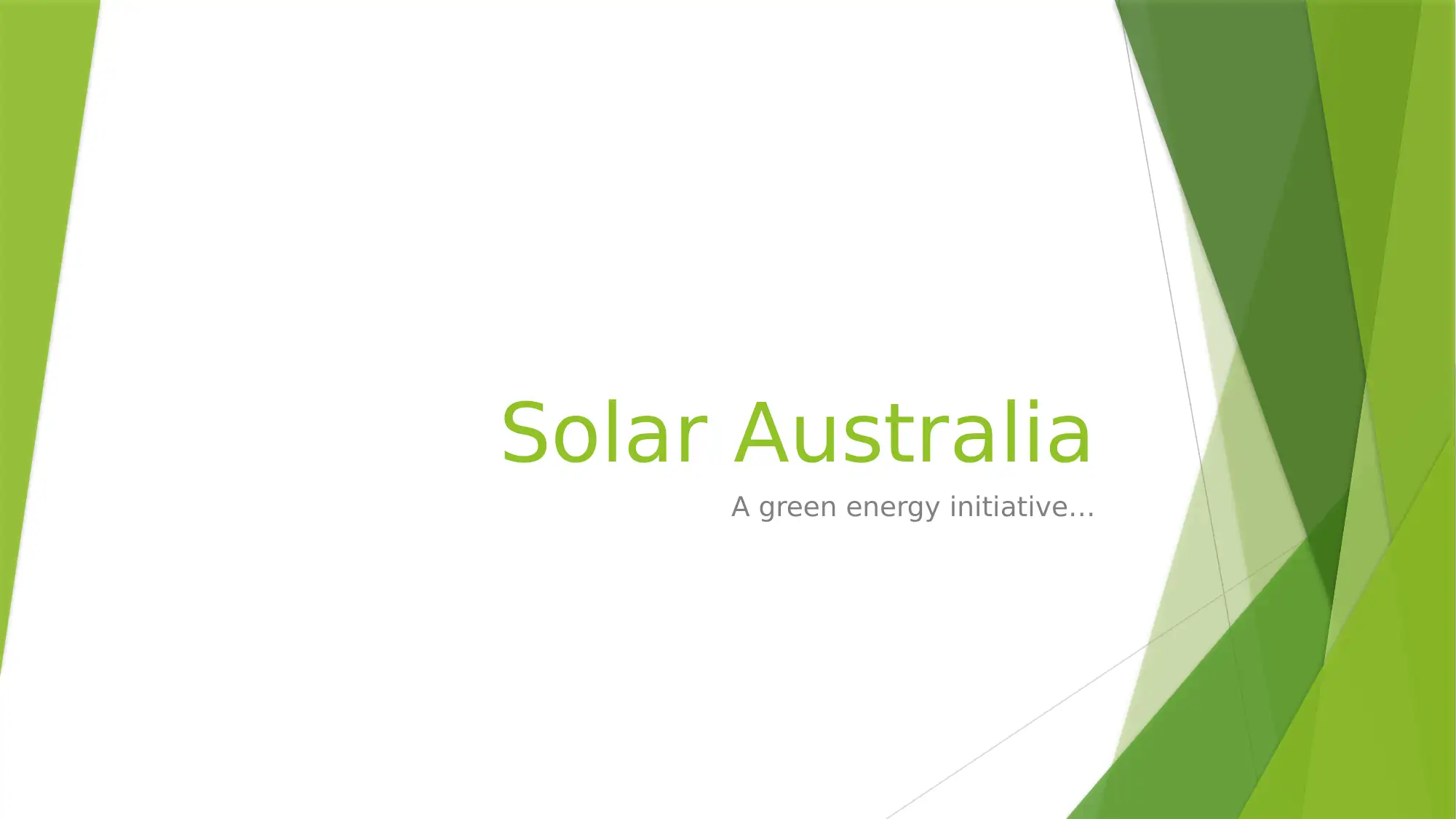
Solar Australia
A green energy initiative…
A green energy initiative…
Paraphrase This Document
Need a fresh take? Get an instant paraphrase of this document with our AI Paraphraser
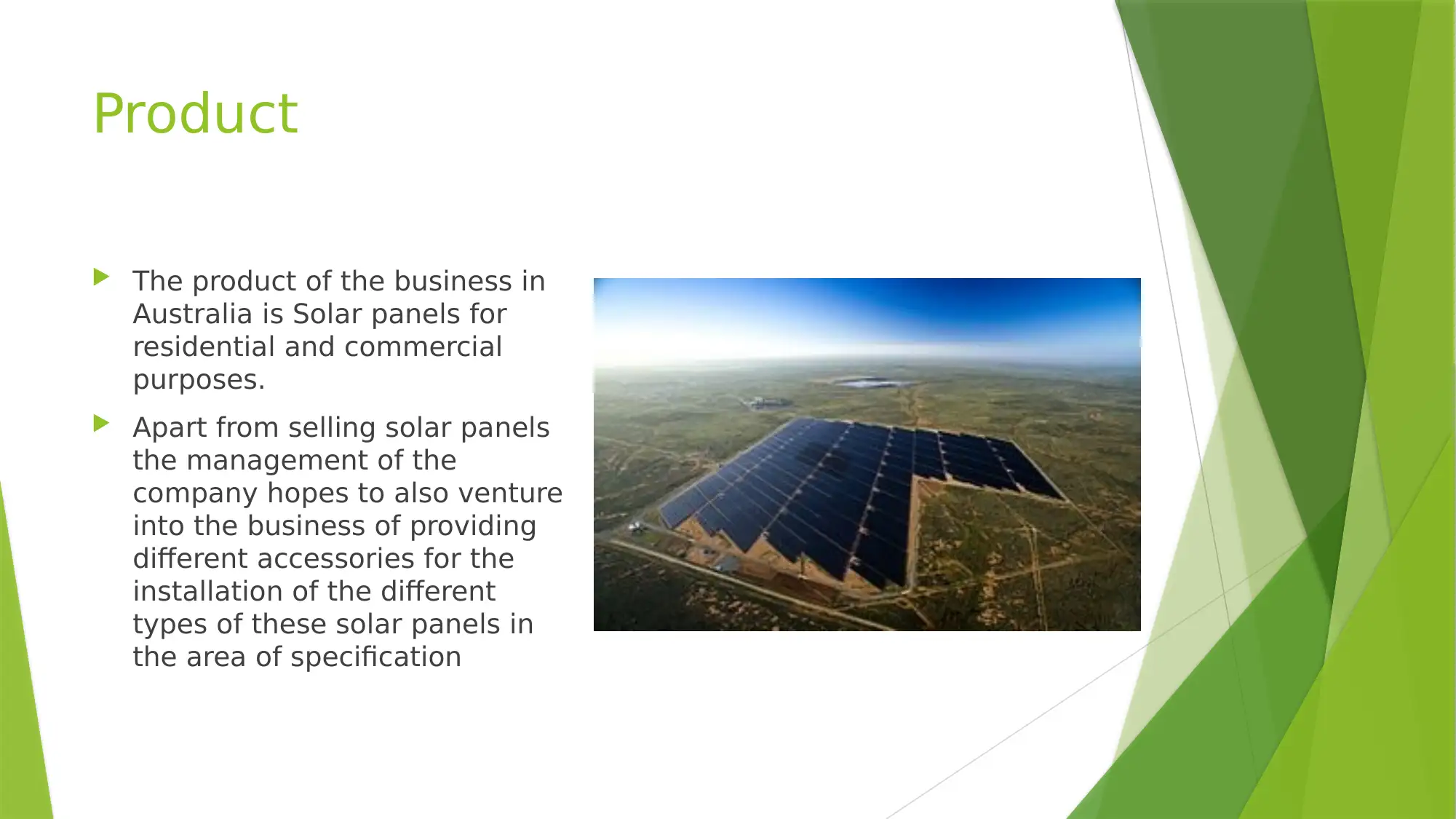
Product
The product of the business in
Australia is Solar panels for
residential and commercial
purposes.
Apart from selling solar panels
the management of the
company hopes to also venture
into the business of providing
different accessories for the
installation of the different
types of these solar panels in
the area of specification
The product of the business in
Australia is Solar panels for
residential and commercial
purposes.
Apart from selling solar panels
the management of the
company hopes to also venture
into the business of providing
different accessories for the
installation of the different
types of these solar panels in
the area of specification
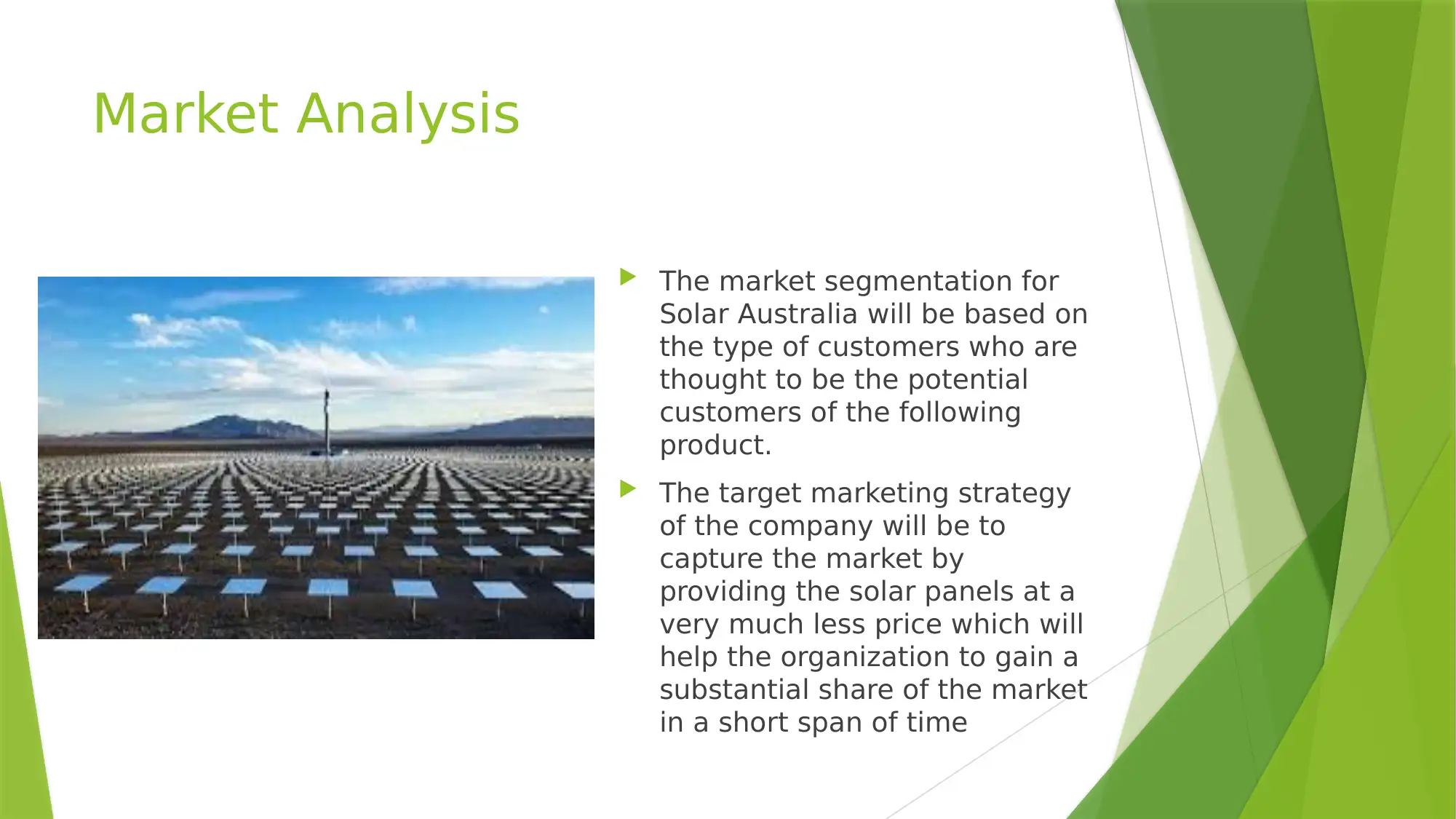
Market Analysis
The market segmentation for
Solar Australia will be based on
the type of customers who are
thought to be the potential
customers of the following
product.
The target marketing strategy
of the company will be to
capture the market by
providing the solar panels at a
very much less price which will
help the organization to gain a
substantial share of the market
in a short span of time
The market segmentation for
Solar Australia will be based on
the type of customers who are
thought to be the potential
customers of the following
product.
The target marketing strategy
of the company will be to
capture the market by
providing the solar panels at a
very much less price which will
help the organization to gain a
substantial share of the market
in a short span of time
⊘ This is a preview!⊘
Do you want full access?
Subscribe today to unlock all pages.

Trusted by 1+ million students worldwide
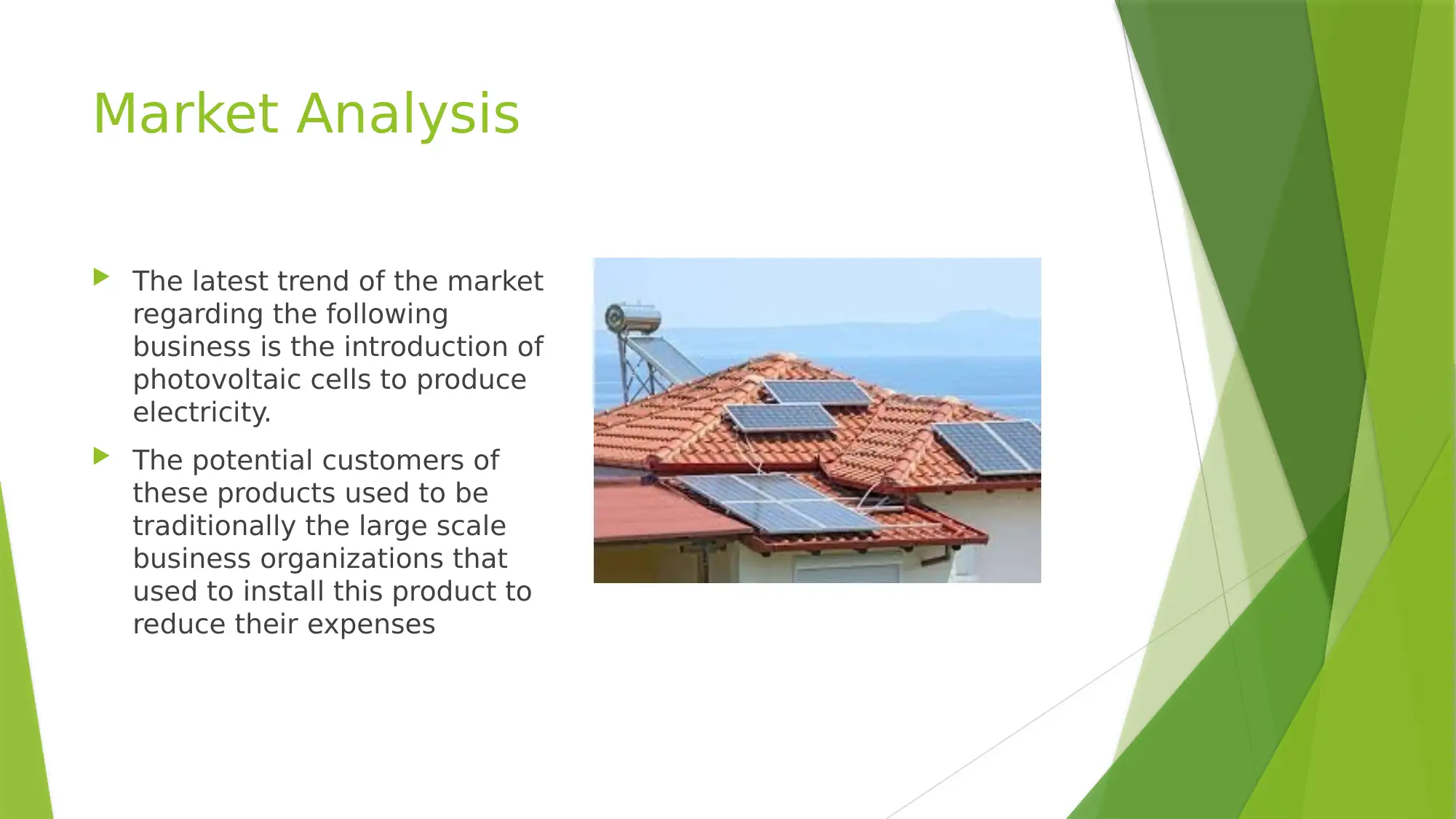
Market Analysis
The latest trend of the market
regarding the following
business is the introduction of
photovoltaic cells to produce
electricity.
The potential customers of
these products used to be
traditionally the large scale
business organizations that
used to install this product to
reduce their expenses
The latest trend of the market
regarding the following
business is the introduction of
photovoltaic cells to produce
electricity.
The potential customers of
these products used to be
traditionally the large scale
business organizations that
used to install this product to
reduce their expenses
Paraphrase This Document
Need a fresh take? Get an instant paraphrase of this document with our AI Paraphraser
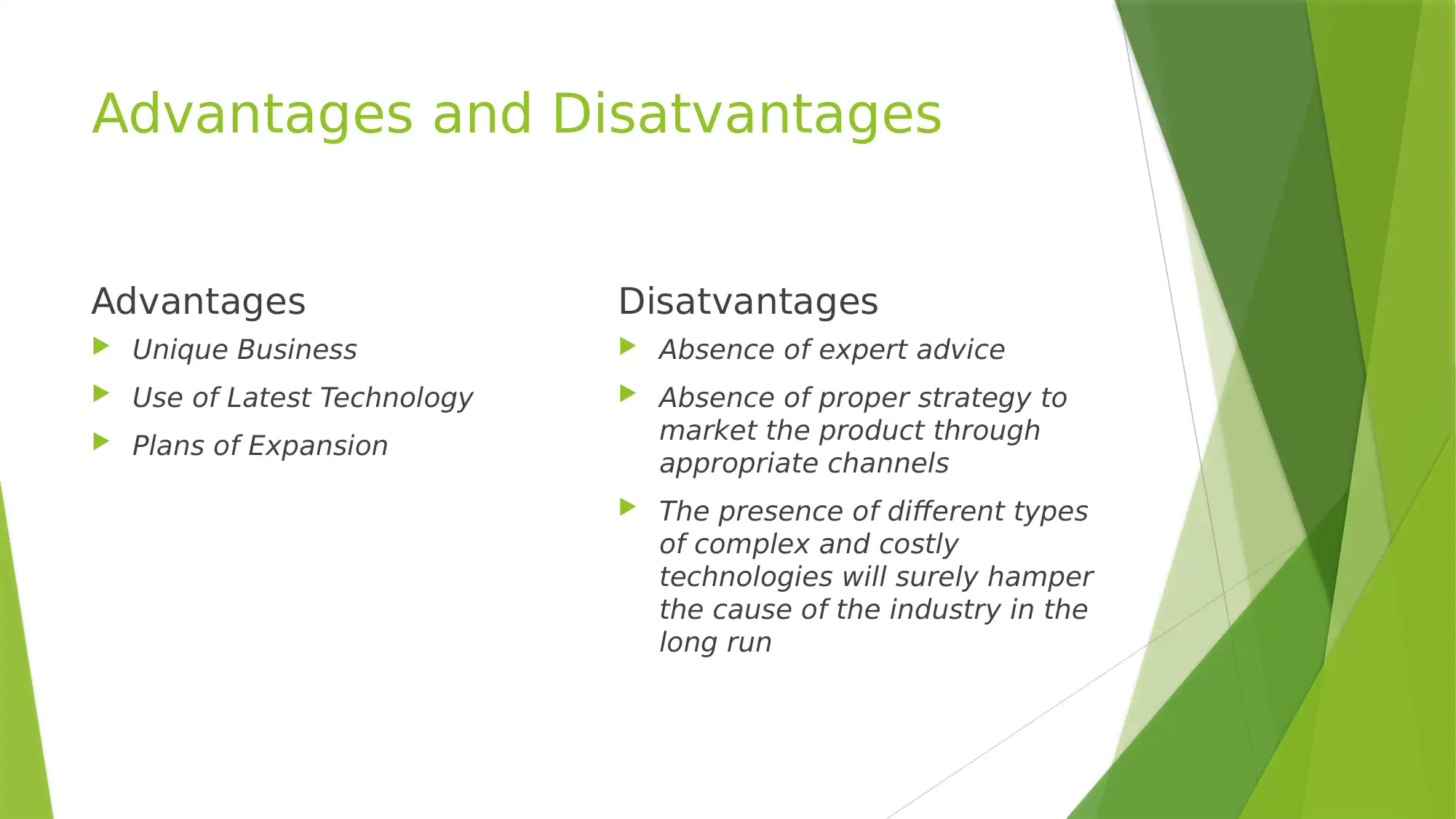
Advantages and Disatvantages
Advantages
Unique Business
Use of Latest Technology
Plans of Expansion
Disatvantages
Absence of expert advice
Absence of proper strategy to
market the product through
appropriate channels
The presence of different types
of complex and costly
technologies will surely hamper
the cause of the industry in the
long run
Advantages
Unique Business
Use of Latest Technology
Plans of Expansion
Disatvantages
Absence of expert advice
Absence of proper strategy to
market the product through
appropriate channels
The presence of different types
of complex and costly
technologies will surely hamper
the cause of the industry in the
long run
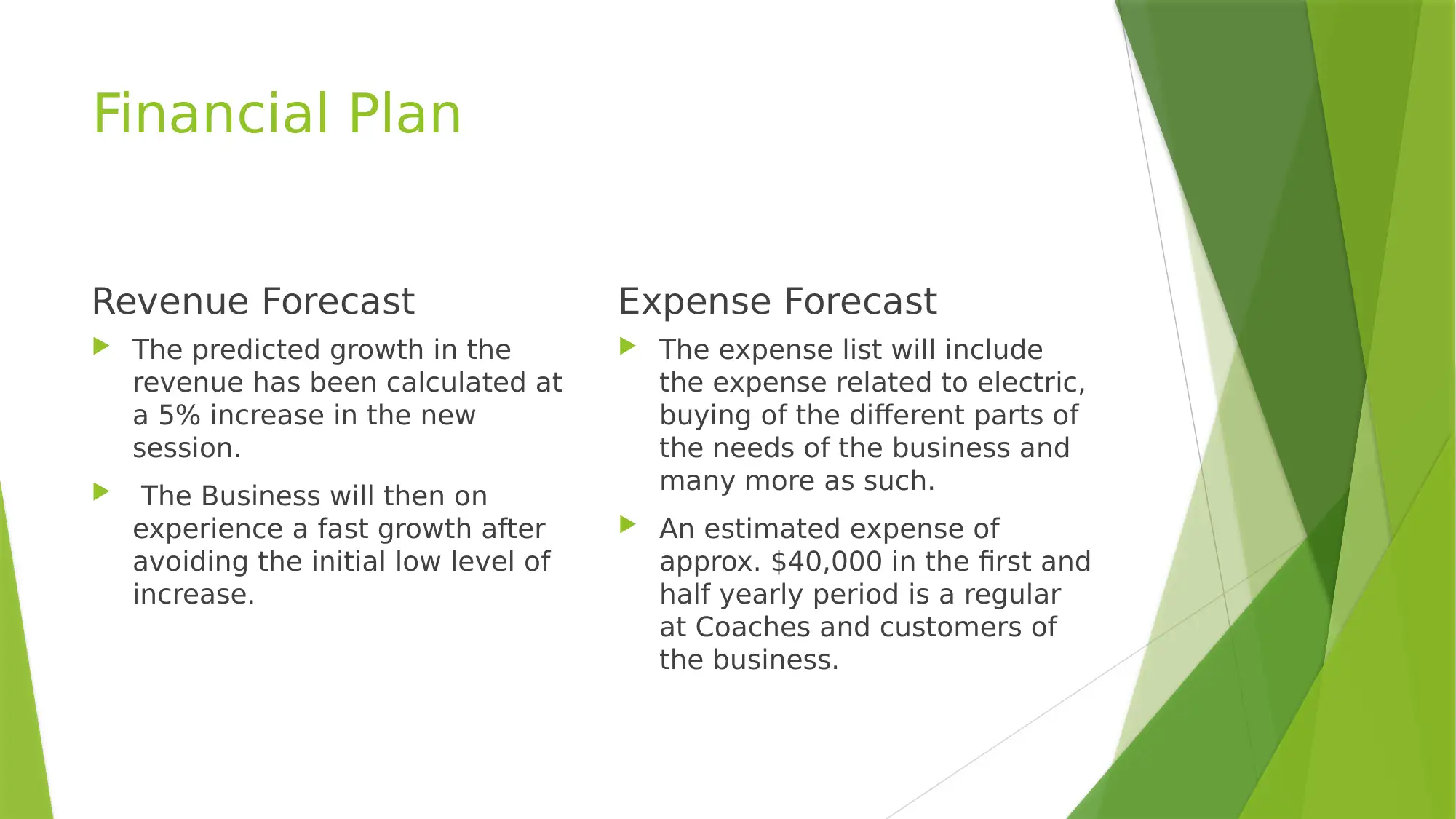
Financial Plan
Revenue Forecast
The predicted growth in the
revenue has been calculated at
a 5% increase in the new
session.
The Business will then on
experience a fast growth after
avoiding the initial low level of
increase.
Expense Forecast
The expense list will include
the expense related to electric,
buying of the different parts of
the needs of the business and
many more as such.
An estimated expense of
approx. $40,000 in the first and
half yearly period is a regular
at Coaches and customers of
the business.
Revenue Forecast
The predicted growth in the
revenue has been calculated at
a 5% increase in the new
session.
The Business will then on
experience a fast growth after
avoiding the initial low level of
increase.
Expense Forecast
The expense list will include
the expense related to electric,
buying of the different parts of
the needs of the business and
many more as such.
An estimated expense of
approx. $40,000 in the first and
half yearly period is a regular
at Coaches and customers of
the business.
⊘ This is a preview!⊘
Do you want full access?
Subscribe today to unlock all pages.

Trusted by 1+ million students worldwide
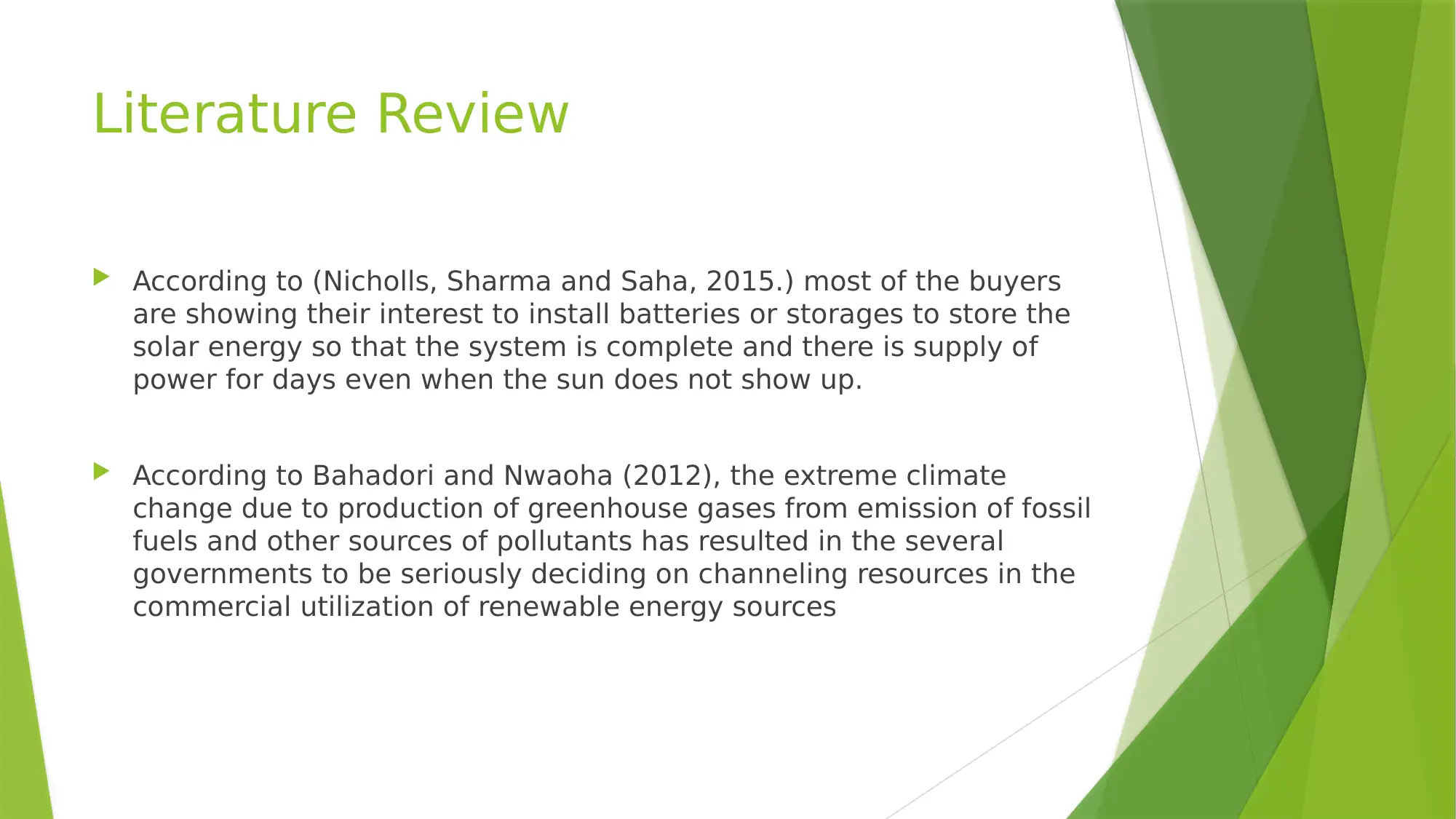
Literature Review
According to (Nicholls, Sharma and Saha, 2015.) most of the buyers
are showing their interest to install batteries or storages to store the
solar energy so that the system is complete and there is supply of
power for days even when the sun does not show up.
According to Bahadori and Nwaoha (2012), the extreme climate
change due to production of greenhouse gases from emission of fossil
fuels and other sources of pollutants has resulted in the several
governments to be seriously deciding on channeling resources in the
commercial utilization of renewable energy sources
According to (Nicholls, Sharma and Saha, 2015.) most of the buyers
are showing their interest to install batteries or storages to store the
solar energy so that the system is complete and there is supply of
power for days even when the sun does not show up.
According to Bahadori and Nwaoha (2012), the extreme climate
change due to production of greenhouse gases from emission of fossil
fuels and other sources of pollutants has resulted in the several
governments to be seriously deciding on channeling resources in the
commercial utilization of renewable energy sources
Paraphrase This Document
Need a fresh take? Get an instant paraphrase of this document with our AI Paraphraser
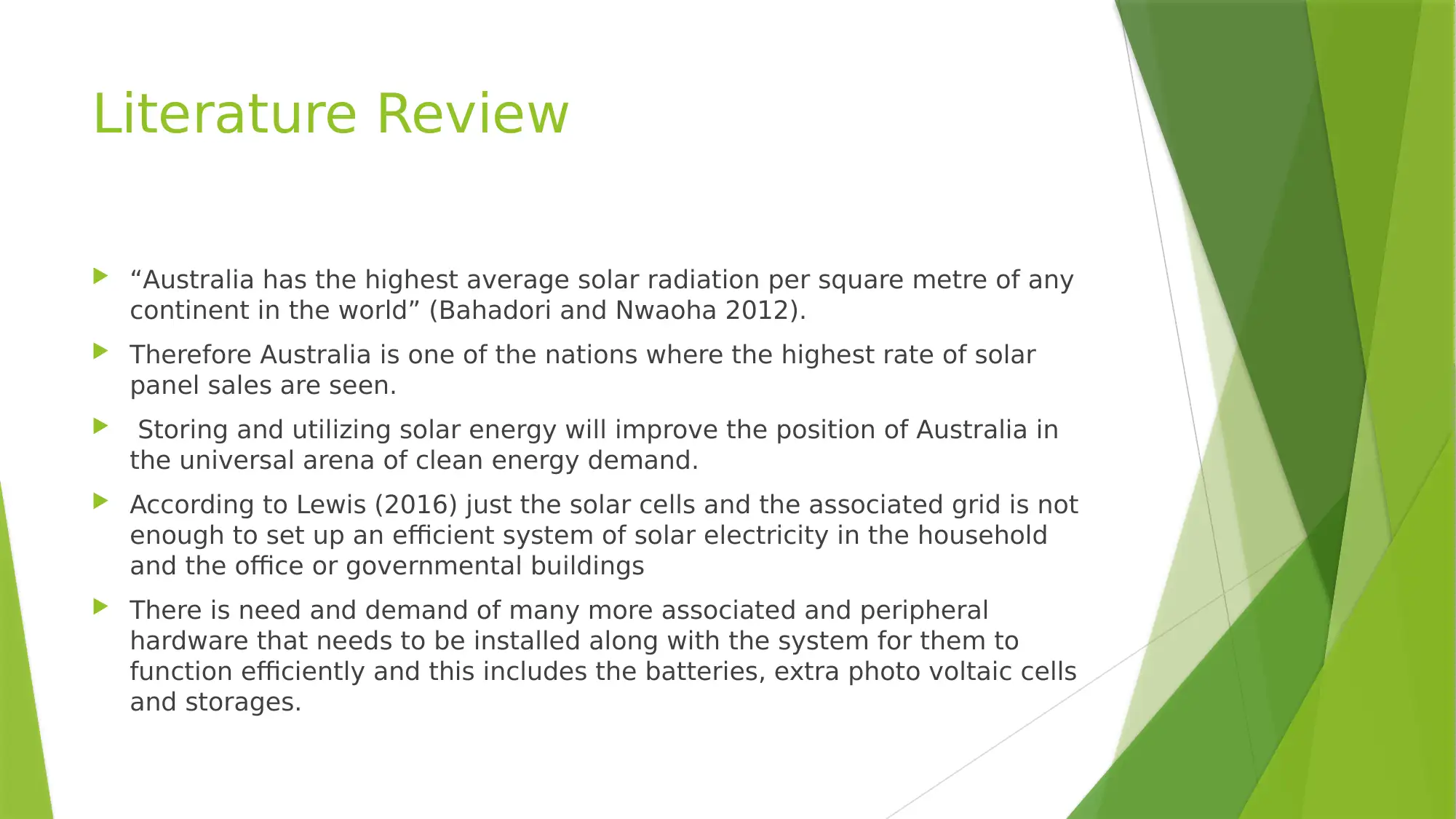
Literature Review
“Australia has the highest average solar radiation per square metre of any
continent in the world” (Bahadori and Nwaoha 2012).
Therefore Australia is one of the nations where the highest rate of solar
panel sales are seen.
Storing and utilizing solar energy will improve the position of Australia in
the universal arena of clean energy demand.
According to Lewis (2016) just the solar cells and the associated grid is not
enough to set up an efficient system of solar electricity in the household
and the office or governmental buildings
There is need and demand of many more associated and peripheral
hardware that needs to be installed along with the system for them to
function efficiently and this includes the batteries, extra photo voltaic cells
and storages.
“Australia has the highest average solar radiation per square metre of any
continent in the world” (Bahadori and Nwaoha 2012).
Therefore Australia is one of the nations where the highest rate of solar
panel sales are seen.
Storing and utilizing solar energy will improve the position of Australia in
the universal arena of clean energy demand.
According to Lewis (2016) just the solar cells and the associated grid is not
enough to set up an efficient system of solar electricity in the household
and the office or governmental buildings
There is need and demand of many more associated and peripheral
hardware that needs to be installed along with the system for them to
function efficiently and this includes the batteries, extra photo voltaic cells
and storages.
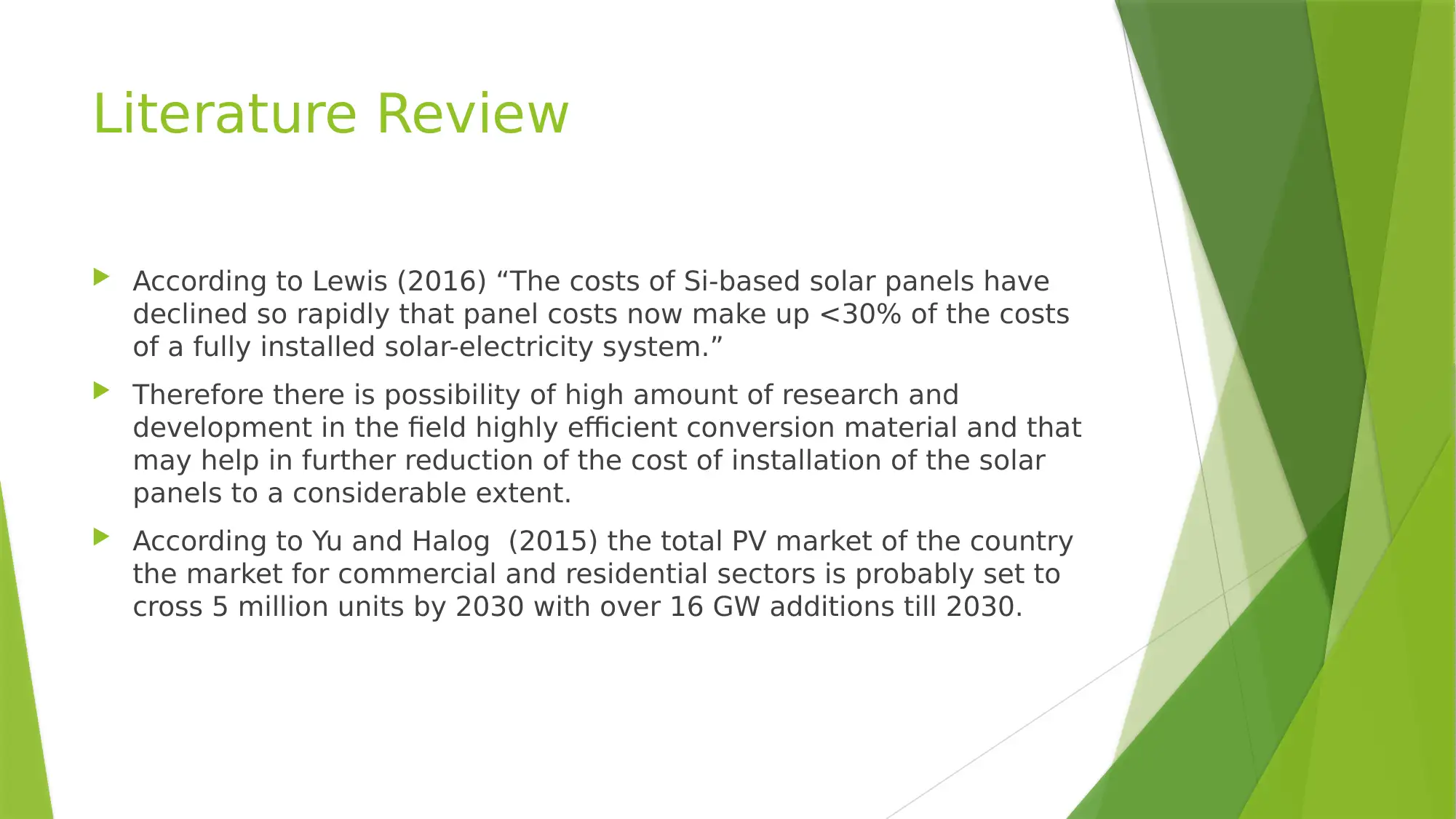
Literature Review
According to Lewis (2016) “The costs of Si-based solar panels have
declined so rapidly that panel costs now make up <30% of the costs
of a fully installed solar-electricity system.”
Therefore there is possibility of high amount of research and
development in the field highly efficient conversion material and that
may help in further reduction of the cost of installation of the solar
panels to a considerable extent.
According to Yu and Halog (2015) the total PV market of the country
the market for commercial and residential sectors is probably set to
cross 5 million units by 2030 with over 16 GW additions till 2030.
According to Lewis (2016) “The costs of Si-based solar panels have
declined so rapidly that panel costs now make up <30% of the costs
of a fully installed solar-electricity system.”
Therefore there is possibility of high amount of research and
development in the field highly efficient conversion material and that
may help in further reduction of the cost of installation of the solar
panels to a considerable extent.
According to Yu and Halog (2015) the total PV market of the country
the market for commercial and residential sectors is probably set to
cross 5 million units by 2030 with over 16 GW additions till 2030.
⊘ This is a preview!⊘
Do you want full access?
Subscribe today to unlock all pages.

Trusted by 1+ million students worldwide
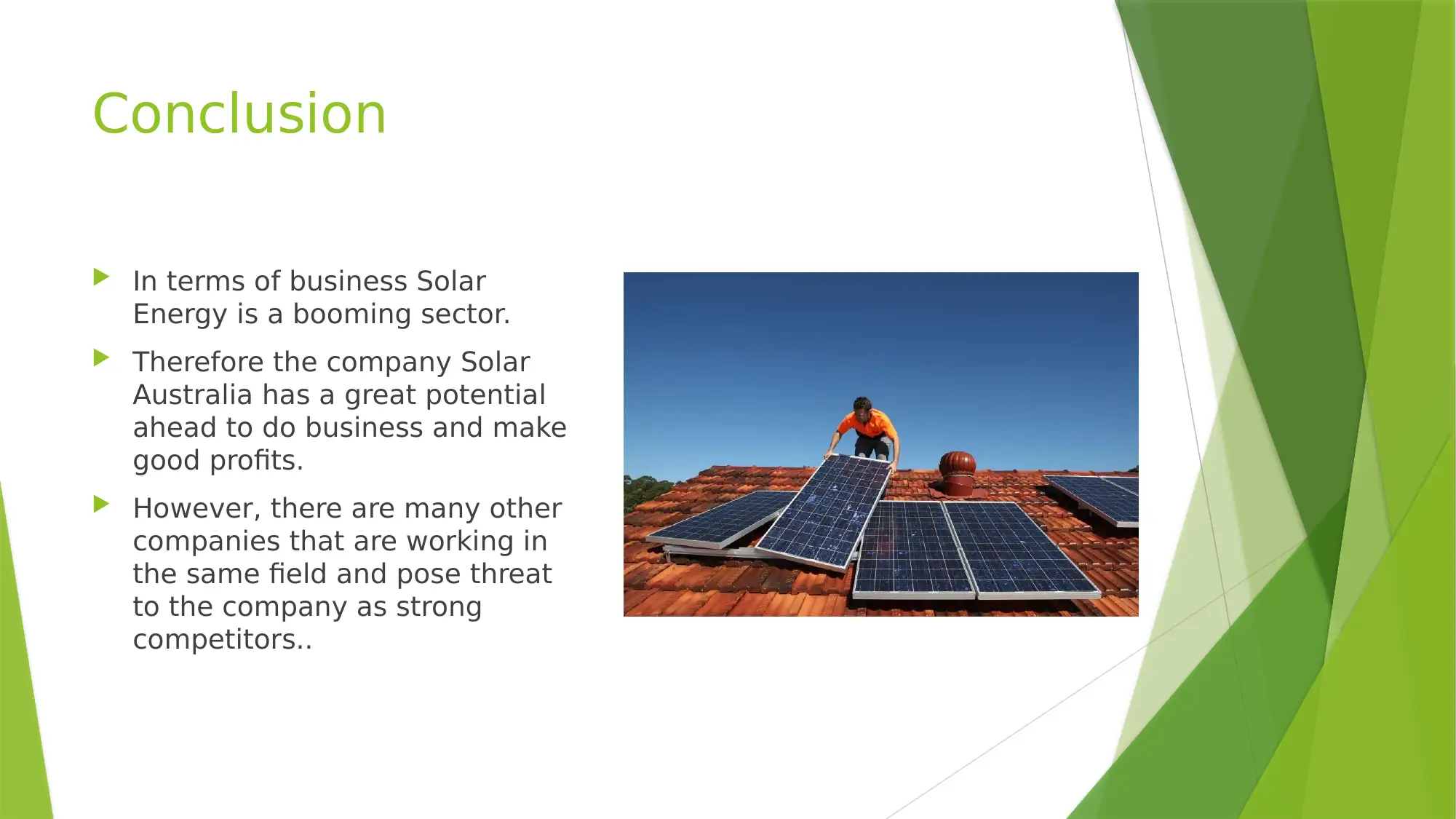
Conclusion
In terms of business Solar
Energy is a booming sector.
Therefore the company Solar
Australia has a great potential
ahead to do business and make
good profits.
However, there are many other
companies that are working in
the same field and pose threat
to the company as strong
competitors..
In terms of business Solar
Energy is a booming sector.
Therefore the company Solar
Australia has a great potential
ahead to do business and make
good profits.
However, there are many other
companies that are working in
the same field and pose threat
to the company as strong
competitors..
Paraphrase This Document
Need a fresh take? Get an instant paraphrase of this document with our AI Paraphraser
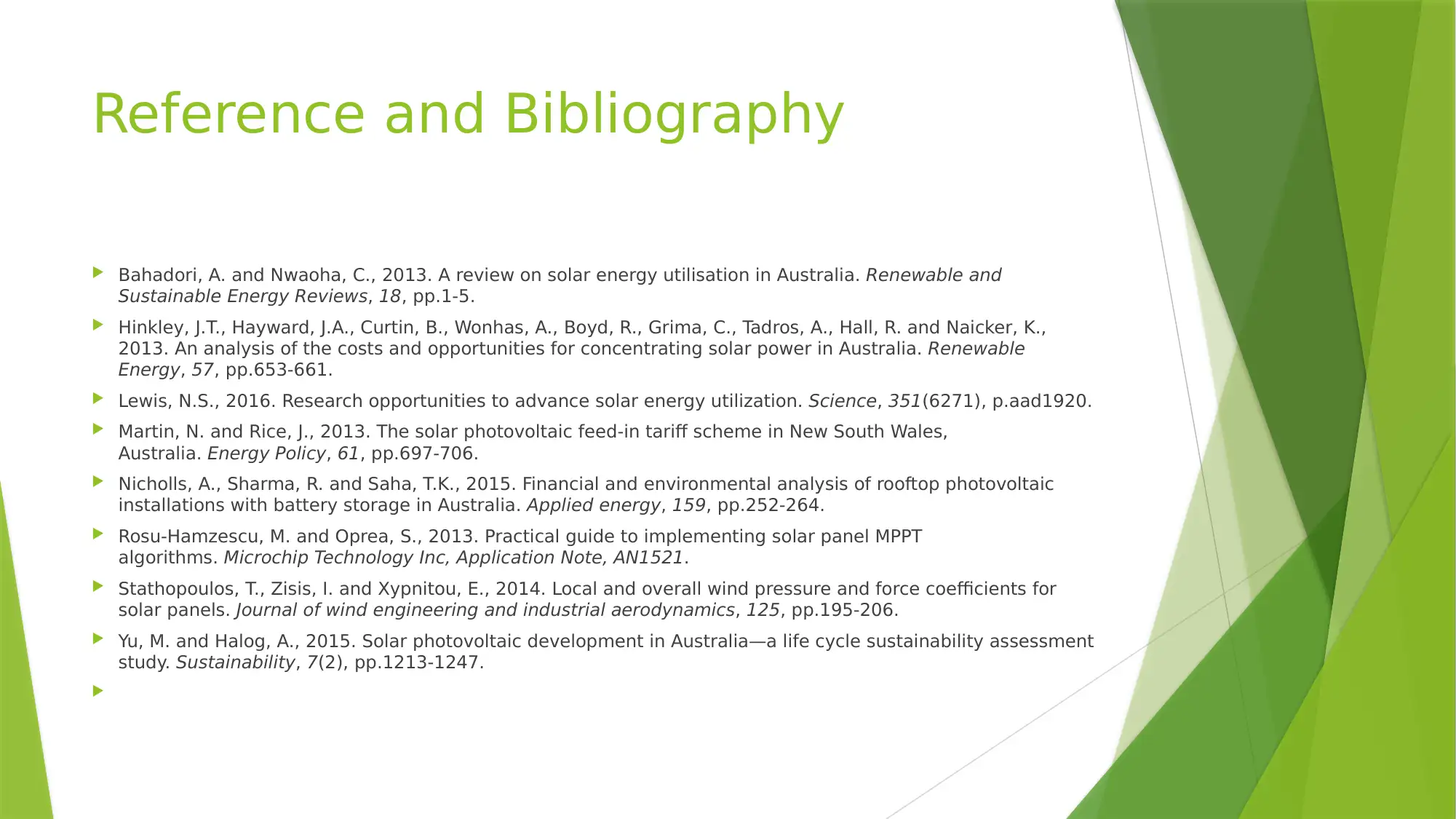
Reference and Bibliography
Bahadori, A. and Nwaoha, C., 2013. A review on solar energy utilisation in Australia. Renewable and
Sustainable Energy Reviews, 18, pp.1-5.
Hinkley, J.T., Hayward, J.A., Curtin, B., Wonhas, A., Boyd, R., Grima, C., Tadros, A., Hall, R. and Naicker, K.,
2013. An analysis of the costs and opportunities for concentrating solar power in Australia. Renewable
Energy, 57, pp.653-661.
Lewis, N.S., 2016. Research opportunities to advance solar energy utilization. Science, 351(6271), p.aad1920.
Martin, N. and Rice, J., 2013. The solar photovoltaic feed-in tariff scheme in New South Wales,
Australia. Energy Policy, 61, pp.697-706.
Nicholls, A., Sharma, R. and Saha, T.K., 2015. Financial and environmental analysis of rooftop photovoltaic
installations with battery storage in Australia. Applied energy, 159, pp.252-264.
Rosu-Hamzescu, M. and Oprea, S., 2013. Practical guide to implementing solar panel MPPT
algorithms. Microchip Technology Inc, Application Note, AN1521.
Stathopoulos, T., Zisis, I. and Xypnitou, E., 2014. Local and overall wind pressure and force coefficients for
solar panels. Journal of wind engineering and industrial aerodynamics, 125, pp.195-206.
Yu, M. and Halog, A., 2015. Solar photovoltaic development in Australia—a life cycle sustainability assessment
study. Sustainability, 7(2), pp.1213-1247.
Bahadori, A. and Nwaoha, C., 2013. A review on solar energy utilisation in Australia. Renewable and
Sustainable Energy Reviews, 18, pp.1-5.
Hinkley, J.T., Hayward, J.A., Curtin, B., Wonhas, A., Boyd, R., Grima, C., Tadros, A., Hall, R. and Naicker, K.,
2013. An analysis of the costs and opportunities for concentrating solar power in Australia. Renewable
Energy, 57, pp.653-661.
Lewis, N.S., 2016. Research opportunities to advance solar energy utilization. Science, 351(6271), p.aad1920.
Martin, N. and Rice, J., 2013. The solar photovoltaic feed-in tariff scheme in New South Wales,
Australia. Energy Policy, 61, pp.697-706.
Nicholls, A., Sharma, R. and Saha, T.K., 2015. Financial and environmental analysis of rooftop photovoltaic
installations with battery storage in Australia. Applied energy, 159, pp.252-264.
Rosu-Hamzescu, M. and Oprea, S., 2013. Practical guide to implementing solar panel MPPT
algorithms. Microchip Technology Inc, Application Note, AN1521.
Stathopoulos, T., Zisis, I. and Xypnitou, E., 2014. Local and overall wind pressure and force coefficients for
solar panels. Journal of wind engineering and industrial aerodynamics, 125, pp.195-206.
Yu, M. and Halog, A., 2015. Solar photovoltaic development in Australia—a life cycle sustainability assessment
study. Sustainability, 7(2), pp.1213-1247.

THANK YOU!
⊘ This is a preview!⊘
Do you want full access?
Subscribe today to unlock all pages.

Trusted by 1+ million students worldwide
1 out of 12
Related Documents
Your All-in-One AI-Powered Toolkit for Academic Success.
+13062052269
info@desklib.com
Available 24*7 on WhatsApp / Email
![[object Object]](/_next/static/media/star-bottom.7253800d.svg)
Unlock your academic potential
Copyright © 2020–2025 A2Z Services. All Rights Reserved. Developed and managed by ZUCOL.





